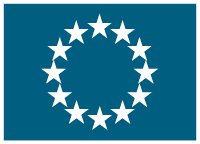How Issues Make the News: A Comparative Analysis of the Causes and Consequences of Media Attention in Belgium, France, Switzerland, and the United States
(How Issues Make News)
Date du début: 28 juil. 2010,
Date de fin: 27 juil. 2011
PROJET
TERMINÉ
Attention drives politics. At every level of government and in the public realm, the political process is shaped by which issues are discussed and which are ignored. Media attention has an especially strong influence. The amount and type of news coverage an issue receives directly affects the amount and type of public concern and government response paid to the issue. Yet media attention is not a fixed process; it varies widely across the political and social contexts of different countries. We (Amber Boydstun at UC Davis in the United States and Stefaan Walgrave at the University of Antwerp in Belgium) propose a systematic analysis of media attention in Belgium, France, Switzerland, and the United States. We are part of the Comparative Policy Agendas Project, an international network of scholars using a common coding scheme to collect data on the governmental and media agendas of more than a dozen countries (and counting). Boydstun was one of the first scholars to apply this common coding scheme to the news. She collected all front-page stories in the US New York Times, 1996–2006 (some 30,000 stories), classifying each story according to the primary policy or non-policy issue being discussed (e.g., abortion, immigration, war, sports, weather). Walgrave is at the forefront of the effort to extend this analysis to the EU, and under his guidance the Belgian, French, and Swiss teams have already completed large datasets of news stories from their home countries, classified using this same coding scheme. We will compare these apples-to-apples datasets of media attention, using statistical analysis to examine three questions: 1) How does media attention vary by country? 2) What factors (e.g., media market competition, political party setup) drive these cross-national differences in news coverage? 2) And finally, what effect do these differences in media attention have on the amount and type of public concern and government response each issue receives in each country?
Accédez au prémier réseau pour la cooperation européenne
Se connecter
ou
Créer un compte
Pour accéder à toutes les informations disponibles
Coordinateur
UNIVERSITEIT ANTWERPEN
€ 80 300,00- Walgrave Stefaan
- PRINSSTRAAT 13 2000 ANTWERPEN (Belgium)
Details
- 100% € 80 300,00
-
 FP7-PEOPLE
FP7-PEOPLE
- Projet sur CORDIS platform



